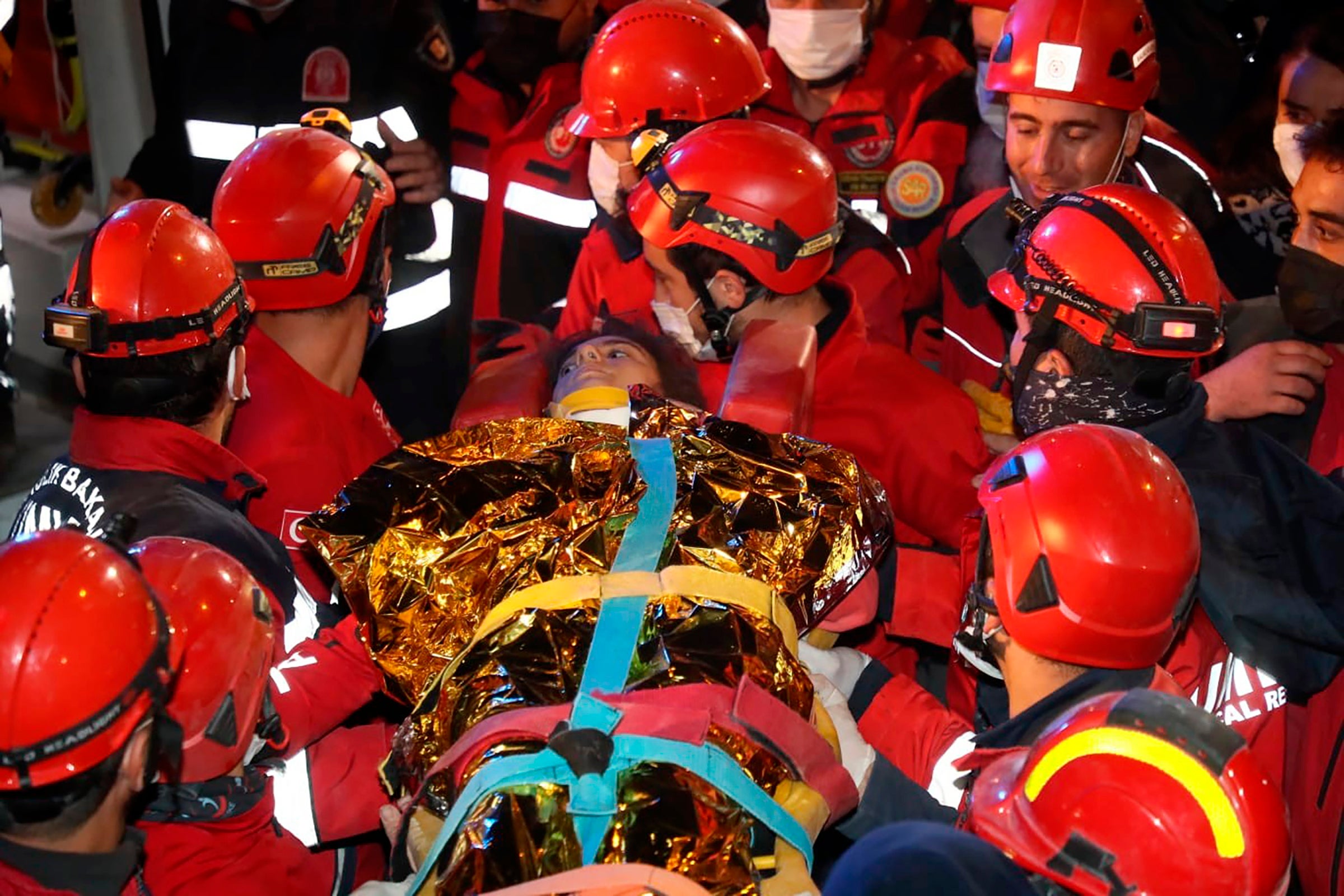‘Prayers are for new miracles’: Turkey’s rescue workers scramble to save those still trapped in Izmir rubble
The devastating earthquake has again exposed questions about how and where apartments are built

The 14-year-old girl had been trapped for 58 hours under the rubble of her collapsed 28-unit apartment building after the devastating 6.6-magnitude earthquake that struck southwest Turkey on Friday. As rescue workers digging beneath generator-powered lights early on Monday morning struggled to reach her, anticipation built up. “Slowly! Slowly!” they called out nervously.
Rapturous applause erupted as they pulled Idil Sirin out alive, according to video footage of the scene in the Izmir district of Bayrakli.
But the joy was short-lived. A little while later the workers pulled out the lifeless body of Idil’s nine-year-old sister, Ipek.
"We were delighted about Idil, who was safely removed from the debris 58 hours after the earthquake, but we were destroyed when we learned that we lost her sister, Ipek,” Izmir Mayor Tunç Soyer said in a statement on Twitter. “Our prayers are for new miracles.”
Turkey’s second-largest metropolitan area struggled to dig itself out from the ruins as the death toll rose to 91, with almost 1,000 people injured. At least 58 buildings collapsed or suffered severe damage in the quake, while another 450 suffered minor or moderate damage, according to an assessment of 4,500 buildings by authorities.
On Monday, civil engineers were building temporary housing to accommodate 1,000 people displaced by the quake.
The disaster, which has garnered continuous coverage on broadcast media, has added another layer of dread to a nation already reeling from a resurgence of the coronavirus pandemic and an economic meltdown that has severely damaged the value of the local currency. Turkey’s president, Recep Tayyip Erdogan, has been accused of being tone-deaf about the earthquake, drawing fire from critics for holding political rallies in eastern Turkey on Saturday and Sunday despite the deaths and destruction in Izmir.
Turks are closely following rescue efforts. More than 100 people have been pulled alive from the rubble. Among them was three-year-old Elif Perincek, a girl saved after being buried alive for 65 hours. She was wrapped in a thermal blanket and carried aloft by rescue workers as her tiny hand clung at the finger of one of them.
Turkey is one of the most seismically volatile regions of the world, criss-crossed by several major fault lines and subject to near-daily tremors. A January earthquake in the eastern district of Elazig killed 41 people and injured 1,600.
Turkey’s economy is fuelled largely by property development and construction projects that critics contend are often shoddily built. In the aftermath of Friday’s quake, questions arose again about hastily constructed buildings that are often built without permits and later legalised under zoning amnesties.
“Skyscrapers, plazas, shopping malls, residences and official buildings have been constructed in earthquake-risk areas across all four corners of Turkey,” columnist Emin Colasan wrote Monday in the newspaper Sozcu.
The opposition People’s Republican Party (CHP) accused Mr Erdogan’s Justice and Development Party of making it too easy for landlords to build profitable substandard housing.
“Our country is in an earthquake zone from east to west,” said a CHP statement. “Why is it always up to our search-and-rescue teams?”
Environment and urbanisation minister Murat Kurum has warned that substandard materials, including low-quality concrete, have contributed to the earthquake risks, especially in working-class districts that get scant attention from building inspectors.
Much of the damage in the Izmir area, for example, lies outside the famous city centre, which draws international tourists and businesspeople, but in more newly built and fast-growing districts such as Bayrakli, where the Sirin sisters lived.
Local media reported that some of the buildings that collapsed were among 208 allegedly unstable buildings identified 10 years ago.
Turkey has sought to improve substandard construction since a devastating 1999 earthquake in the northwestern city of Izmit killed at least 17,000 people, many of them crushed in collapsed buildings.
Subscribe to Independent Premium to bookmark this article
Want to bookmark your favourite articles and stories to read or reference later? Start your Independent Premium subscription today.

Join our commenting forum
Join thought-provoking conversations, follow other Independent readers and see their replies